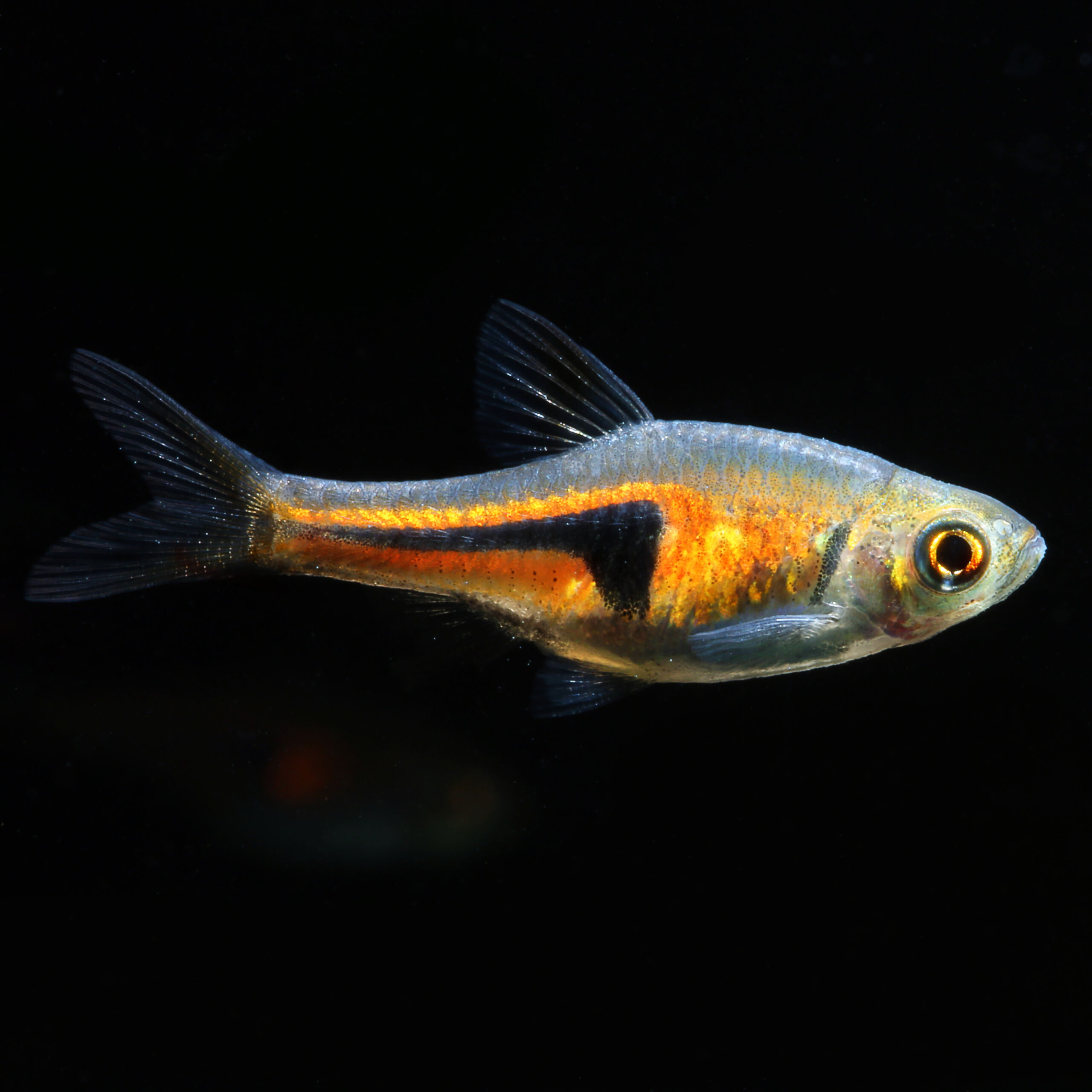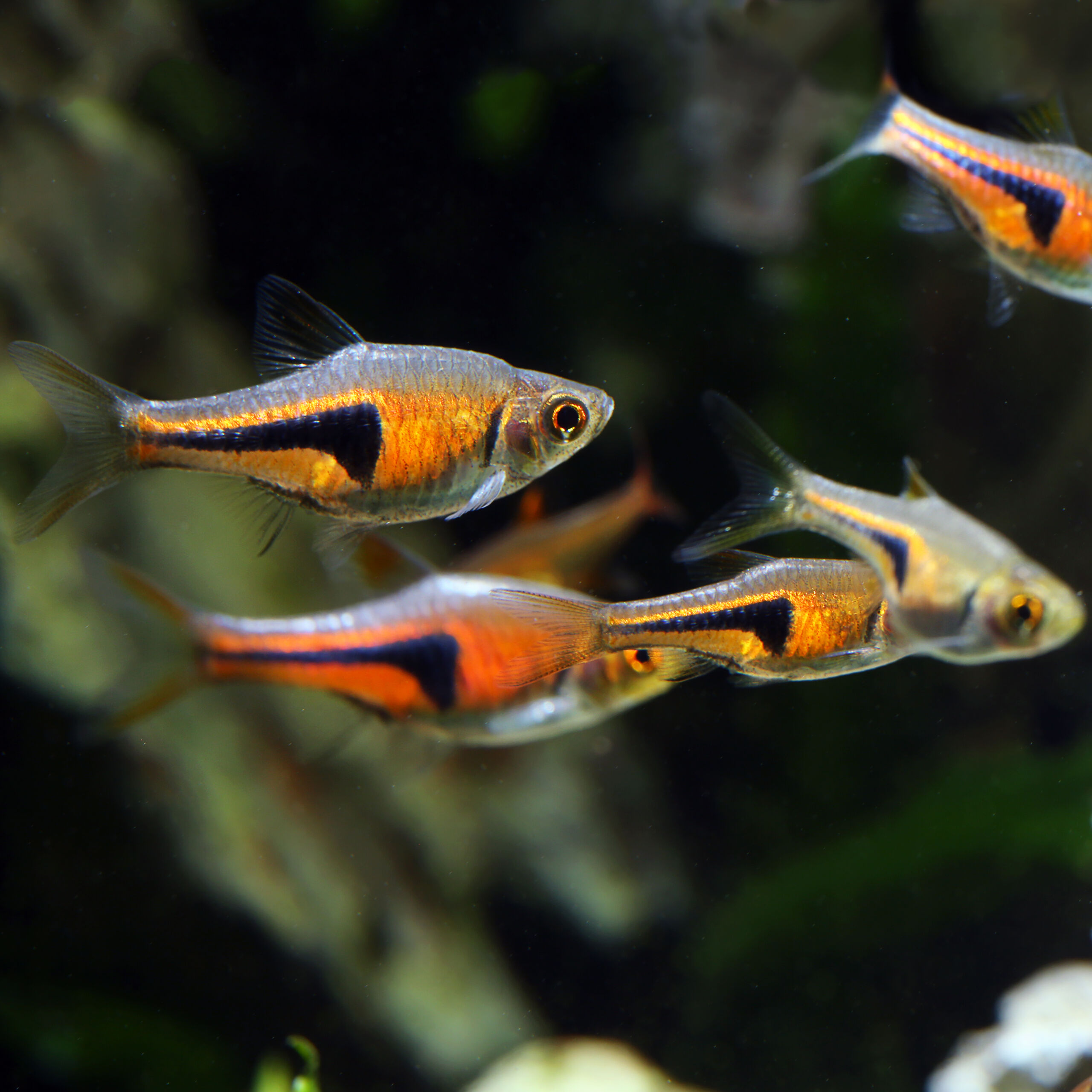Espes Rasbora
Rasbora espei
With its distinctive coloring, the Espes Rasbora is a real feast for the eyes.
- beautiful, contrasting coloring
- striking black spot on the side of the body
- great schooling fish from Southeast Asia
1 in stock
 Delivery in a few working days
Delivery in a few working days
 Free shipping from €60 across Austria
Free shipping from €60 across Austria





Important data
Product description & details
The Espes Rasbora is a beauty native to Southeast Asia. The small carp fish is widespread in southeastern Thailand and Cambodia, where it lives in heavily weedy ponds and swamps. It has an orange-red body color and a black, harlequin-shaped marking on the side of the body.
Care in the Aquarium
It is possible to keep the Espes Rasbora in an aquarium from 60 liters, but we recommend at least 80 liters. This should have dense border plants, but leave enough swimming space. Subdued lighting and a dark substrate not only ensure that the little rasboras feel safe, but also bring out the great coloring particularly well. As a schooling fish, it should also be kept together with at least 10 members of its species. Relatively soft water rich in humic substances with a temperature between 23 and 27°C is optimal. The pH should be slightly acidic and not go above 7.0. It is a calm, peaceful animal that can be easily socialized with other small and peaceful species.
Feeding
Small types of food for rasboras as well as small live and frozen food are readily consumed by the mainly carnivorous Espes Rasbora. Frozen and live foods such as Artemia nauplii, copepods and daphnia are suitable for this purpose.
Sexual characteristics and breeding
The male Espes Rasbora are generally more strongly colored and somewhat slimmer in body structure than the females. This rasboras is bred in soft, acidic water. The addition of humic substances, for example in the form of Indian almond tree leaves, walnut leaves or alder cones, also prevents the eggs from becoming fungal. The willingness to spawn can be increased by giving more live food. Unlike many fish, the Espes Rasbora lays its eggs on the underside of plant leaves. There is no brood care and there is a risk that the parents will eat their own eggs, which is why a separate breeding tank should be available. The newly hatched fish larvae can initially be fed with dust food and infusoria and later with Artemia nauplii and other small types of food.






